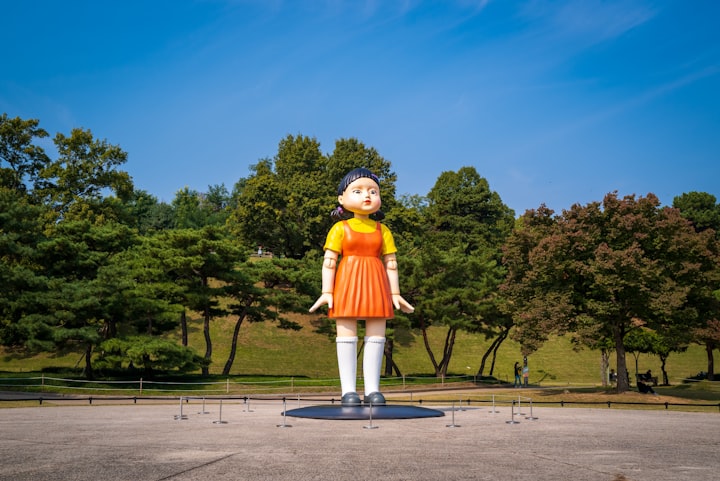Do You Believe In Dragons?
"Fairy tales are more than true: not because they tell us that dragons exist, but because they tell us that dragons can be beaten" (N.Gaiman)

If, like me, you are obsessed with Game of Thrones, then dragons play a large part in your life. From the first time I saw Daenerys with her 3 dragon eggs (a wedding gift when she married Khal Drogo), to when we see the dragons fully grown, I have almost dreamt and ‘lived’ “Dragons”. Drogon is the black and red dragon and the one Deanerys rides. Rhaegal is green and bronze and he was named after her eldest brother. Viserion is cream and gold, and was named after her other brother, who met his death at the hands of Khal Drogo. The CGI in Game of Thrones just made these 3 dragons “come alive” and are a real spectacle to behold!
Are or were dragons ever real? These ‘mythical’ beasts have been in our history for centuries, with each fairy-tale handed down from generation to generation. They are known throughout the world, from China to India to the Americas and Europe. The English word “dragon” comes from the Greek word “Drakon”, which was originally used for any large serpent. Through history, dragons could be either a force for good or evil. It is not known where the first ‘mythical’ dragons came ‘alive’ (maybe dragons were real after all), but we do see them in the Greeks and Sumerian literature. “In the ancient world they took the form of enormous serpents, ready to crush with their coils and kill with their venomous breath”, (The Penguin Book of Dragons). Interestingly, before we knew about dinosaurs, people believed that the huge fossil bones they found were dragon bones.
Even though we may never know for certain if dragons really did exist, there is still a great deal of ‘information’ about them. There are 7 ‘classes’ of dragon: boulder, mystery, sharp, stoker, strike, tidal and tracker. There are 4 ‘types’ of dragon: celestial, the dragon of hidden treasure, earth dragon and spiritual dragon. Dragons are also different colours: blue, green, red, black, white, yellow and golden, the gold dragon being stronger than the red dragon.
In China, the dragon goes way back. The Chinese dragon, “lung” represented the yang, the principle of heaven, activity, and the ‘male’ in the yin yang. It was the emblem of the Imperial Family and the dragon was on the Chinese flag. Within the Hall of Supreme Harmony (within The Forbidden City), the Three Great Halls feature over 10,000 dragons. There are 19 dragons painted in gold in the throne and 79 carved in the folding screen behind the throne. In The Forbidden City, the dragon was symbolic of “the unquestionable divine imperial power of the Emperor”.
In England, dragons (again) go back centuries. In 793, there was a famous sighting of a dragon, a fire-breathing dragon, flying above Northumbria, although now it is thought to have been a comet. In Mediaeval times, people may have actually believed that dragons were real, very much like they believed that lions and elephants are real, even though they had never seen any of them in real life. The dragon is featured on many “Coat of Arms”. Dragon Hill, in south Oxfordshire, is the site of the legendary battle between St.George and the dragon. The story goes that the dragon wanted to eat the King’s daughter, so St.George bravely fought for her honour and killed the dragon. The legendary King Arthur’s father used the dragon as the Royal Insignia.

We would love to believe that dragons really did exist, but even in the books of mythology, it is always a ‘might’ and never a definite. The ‘dragons’ that do live today live really in name only. The Komodo Dragon can be found in the Indonesian Islands of Komodo, Rinca, Flores and Gili Motang. It is the largest member of the monitor lizard family, growing to a length of 3 metres (10ft), and it can weigh up to 70 kilograms (150lb). These ‘dragons’ were discovered in 1910 by Western scientists. These gigantic lizards hunt invertebrates (lobster, crab, insects), birds and mammals for food, (as well as the occasional human).These real dragons have two glands in the lower jaw that secrete several toxic proteins, which give a venomous bite.
So, what do you think? Are you like me, and want to ‘believe’ in dragons? Whatever we personally think, the mythical dragon is here to stay in the human psyche. With a little extra care, the Komodo dragon will be with us for even longer.
About the Creator
Ruth Elizabeth Stiff
I love all things Earthy and Self-Help
History is one of my favourite subjects and I love to write short fiction
Research is so interesting for me too






Comments (2)
"Here be dragons" - a phrase found on old maps, suggesting their existence in the past. Now, moving on to a more serious discussion. It is intriguing to ponder why dragons persist in almost every mythology, including our Bulgarian mythology where several kinds of dragons are featured. Though they may bear different names, these dragons are essentially variations of the same mythical creature. The concept of dragons appears to have originated from ancient times and has endured through the ages, coexisting with various other magical creatures that have found their way into numerous mythologies. As a fellow dragons enthusiast, I have written several fairy tales about these majestic creatures. Regrettably, I haven't had the opportunity to translate them into English yet.
We also have the small dragon too. The bearded dragon. You're an amazing writer and I enjoyed you take on dragons.